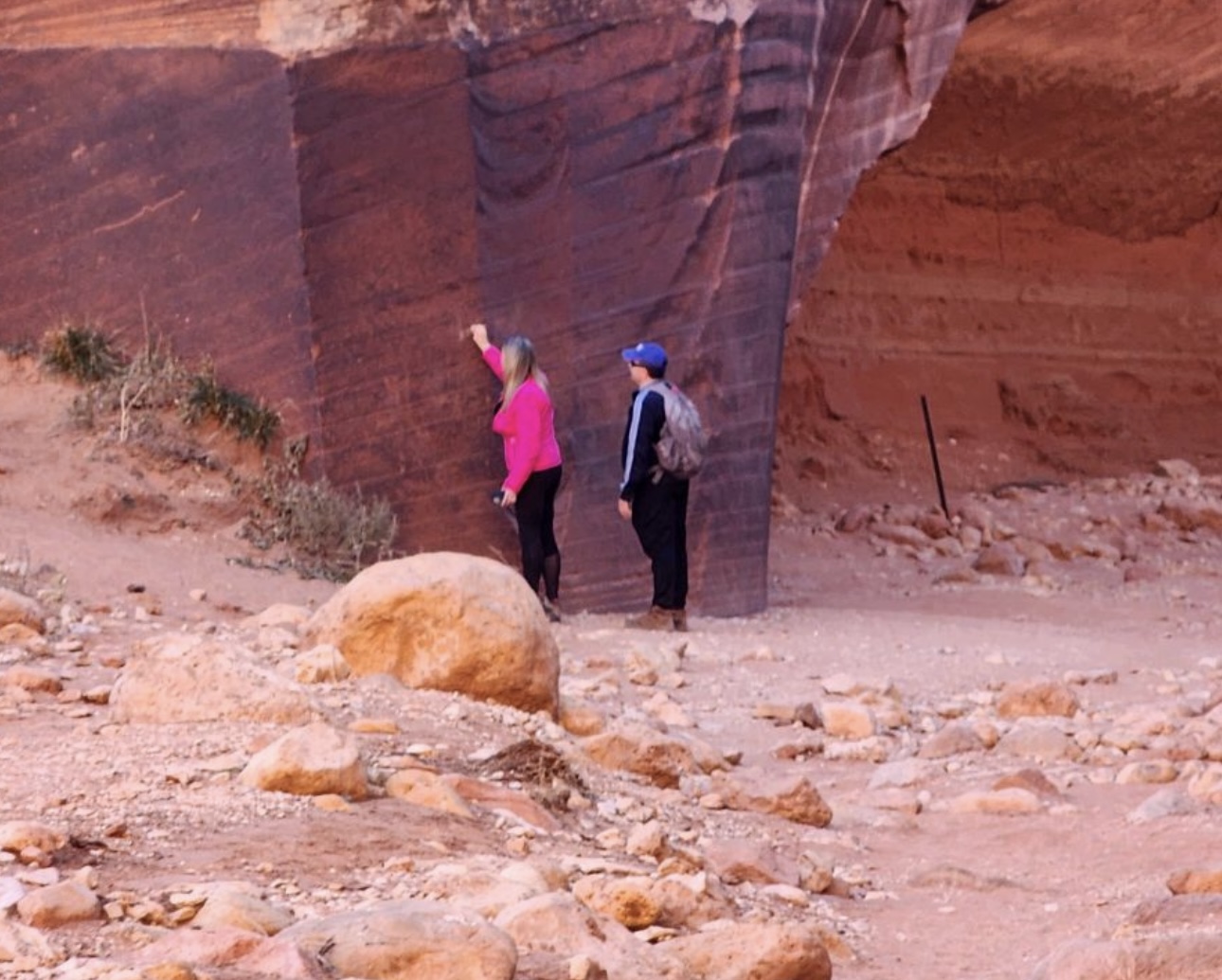Some information may be outdated.
On a crisp spring evening, Lisa Hathaway is on her way to the trailhead of a remote canyon. With her she has a pair of binoculars and a log book. As she traverses red dirt paths over stacks of boulders and down long canyons illuminated by moonlight, Hathaway is listening for bird calls. I speak bird,” Hathaway quipped.”
When pressed on how many birds she can recognize by sound alone she said, “With owls, probably like 12 or 13.” Hathaway is monitoring birds protected by the Migratory Bird Treaty Act and the Endangered Species Act. “I will whoo-whoo at regular intervals and, theoretically, if there’s an owl in that canyon they might respond,” Hathaway said. When she hears a whoo-whoo back, she will mark the location and species in her log book, which will be added to the growing data on raptor nests in and around Moab.
Hathaway and a team of biologists from the Bureau of Land Management and independent environmental consulting firm Southwest Research Nonprofit survey climbing areas each spring to confirm where raptors– including golden eagles and peregrine falcons are nesting. This team is looking for more than bird calls; however, they are also looking for birds themselves, evidence of nests, and “white wash” along the cliffs caused by bird droppings. “If you see what looks like a paint brush stroke on the cliff, that’s probably turkey vulture,” Hathaway said. “If you see these little thin streaks in an inset in the crack, that could be a peregrine. If you see a bunch of big sticks sticking up from a ledge, that could be a golden eagle nest site.”
The researchers determine where the nests are and confirm they have the expected feathered occupants, so that the BLM can issue accurate seasonal avoidance areas. Hathaway and the biologists monitor the nests all season to make sure the offspring have fledged and will additionally confirm once they’ve left the nest, and the avoidance areas can be lifted.
“The thing about most raptors is they have really high nest site fidelity year-after-year,” Hathaway said. “Once you determine that there’s occupancy, then you start monitoring. You’re going out at least once a month, if not more, to see what the reproductive status [of the nest] is.” Once a year–typically in the spring–the BLM issues avoidance areas for the general public to adhere to. These avoidance areas are meant to keep the public away from raptors while they are in their delicate nesting stage.
The BLM, as well as access organizations–such as the climbing nonprofit Access Fund– announce these avoidance areas so that recreationalists can avoid them and help in the preservation of these protected bird species. The avoidance areas are in place until the raptors have fledged, meaning their babies have hatched and flown the nest. Andrea Hessler, stewardship and education director for the Access Fund, said she is trying to promote awareness on the avoidance areas to climbers through their Climber Coffee program in Indian Creek.
“If at any point in that time there’s too much human disturbance, they won’t nest in that area. If the [bird] is incubating the eggs and they’re disturbed, the bird will leave the nest and the eggs will die,” Hessler said. Unfortunately for climbers, this means that from spring until early summer, many of the climbing walls in Indian Creek are affected by these avoidance areas.
“Birds of prey are really good at picking beautiful territories to nest in,” Hathaway said. “They seem to, for whatever reason, have that in common with climbers.”
This year, avoidance areas were opened in Indian Creek on September 15. Hathaway urges climbers to respect the avoid- ance areas and recognize their importance in protecting the ecosystem.
“If someone doesn’t care about their natural world, then I don’t know what to say, but I feel like you should care,” she said. “This is part of your natural environment, and if we keep losing [that] then our quality of life is going to decrease.”
Hessler feels similarly—if her actions can help determine the survival of another species, she wants to choose the action that helps that species thrive, she said. “I think that that’s something that all people could relate to,” she said. “If those were your babies, you’d want other people to stay away so that your babies could survive.”
Appreciate the coverage? Help keep local news alive.
Chip in to support the Moab Sun News.





